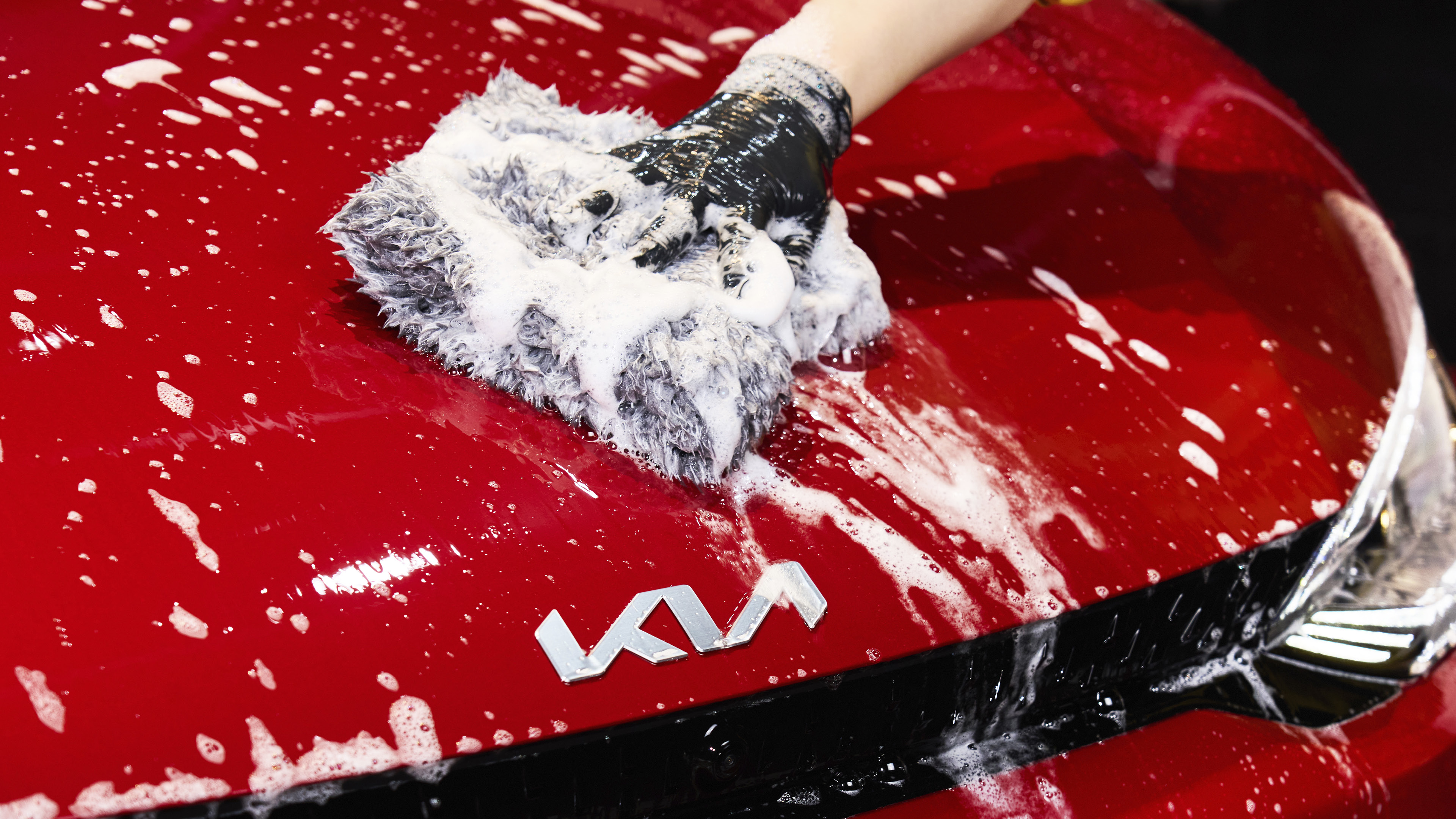
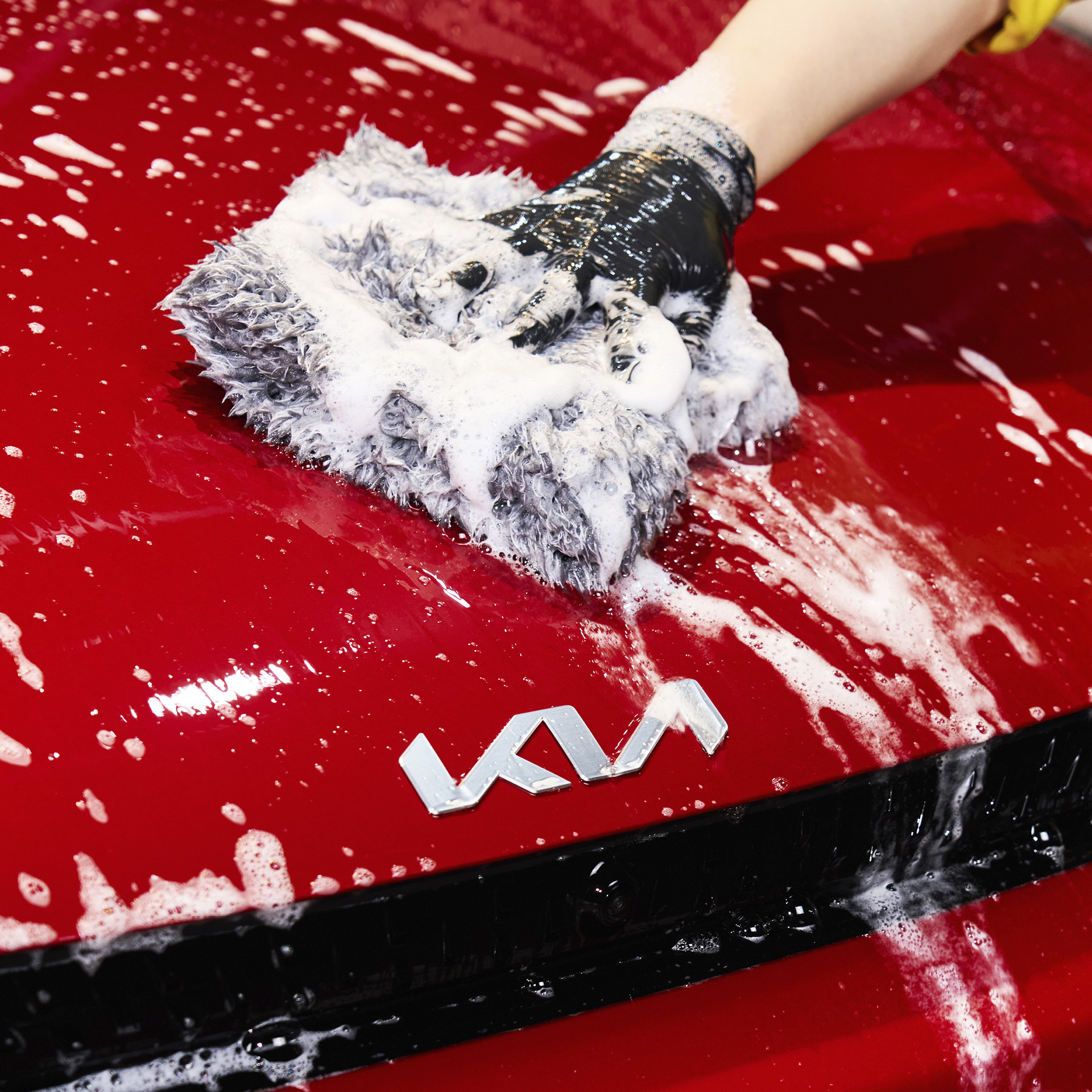


Unlike in the past, a car is a tool to express oneself and a companion to enjoy leisure activities together. This change in perception is naturally creating a new automobile culture. One of the most popular is the self-service car wash. It is rapidly emerging as a new culture of enjoying cars because you can get high satisfaction by managing your car yourself at a relatively low cost.

In particular, as the term ‘detailing’ draws attention, car owners are trying more professional car management. However, many people hesitate because the word detailing reminds them of experts. Is detailing really difficult for amateurs to enjoy? Here, the meaning of detailing and the process that can be easily followed at a car wash are explained in detail so that anyone can easily enjoy detailing.
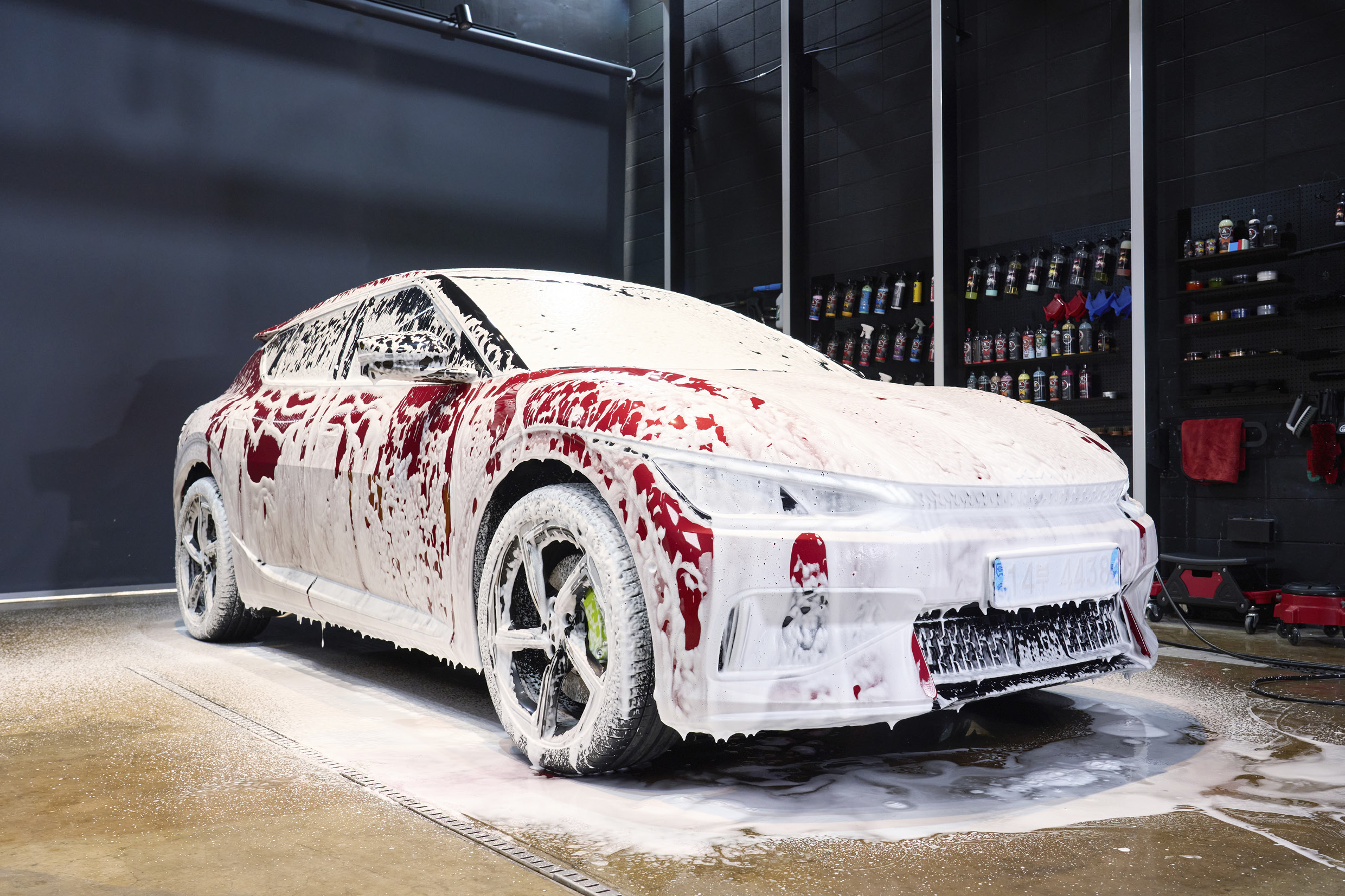
The exact term for detailing is ‘auto detailing’ or ‘car valeting’. Auto-detailing, which originated in England, is a culture born of the effects of inclement weather that requires an umbrella to be carried at all times; Frequent rain heavily polluted the car, which made it necessary to wash it frequently.
Auto detailing refers to the work of restoring and maintaining the paintwork of a car to its best condition without replacement or painting, and is largely divided into exterior detailing, interior detailing, and engine detailing. Many people think of auto detailing as meticulous car washing from head-to-toe. However, auto detailing includes all processes - pre-wash, main wash, iron removal, water-repellent coating, wax coating, as well as polishing, cleaning, and restoration to remove scratches such as swirl marks.
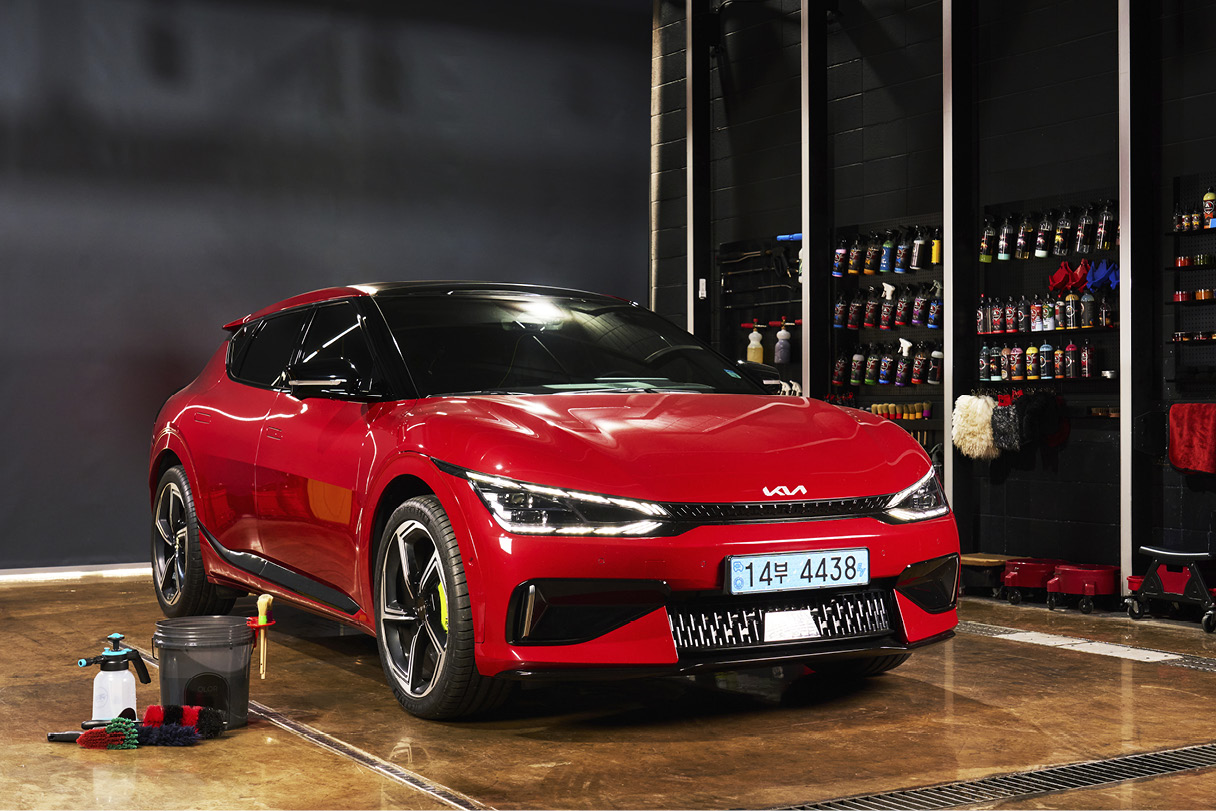
The first step in auto detailing is to check how dirty the car is. When inspecting a car at a car wash, the first thing to do is to check the surface condition and look for wheel dust, fallout, dirty tires, etc. After that, you can choose the car wash procedure and detergent that suits the condition. It is good to lower the heat of the car body before starting auto detailing, because the temperature of the car body is high immediately after driving, so water or detergent dries quickly and water spots are easily formed. It is recommended to lower the body heat by opening the bonnet.
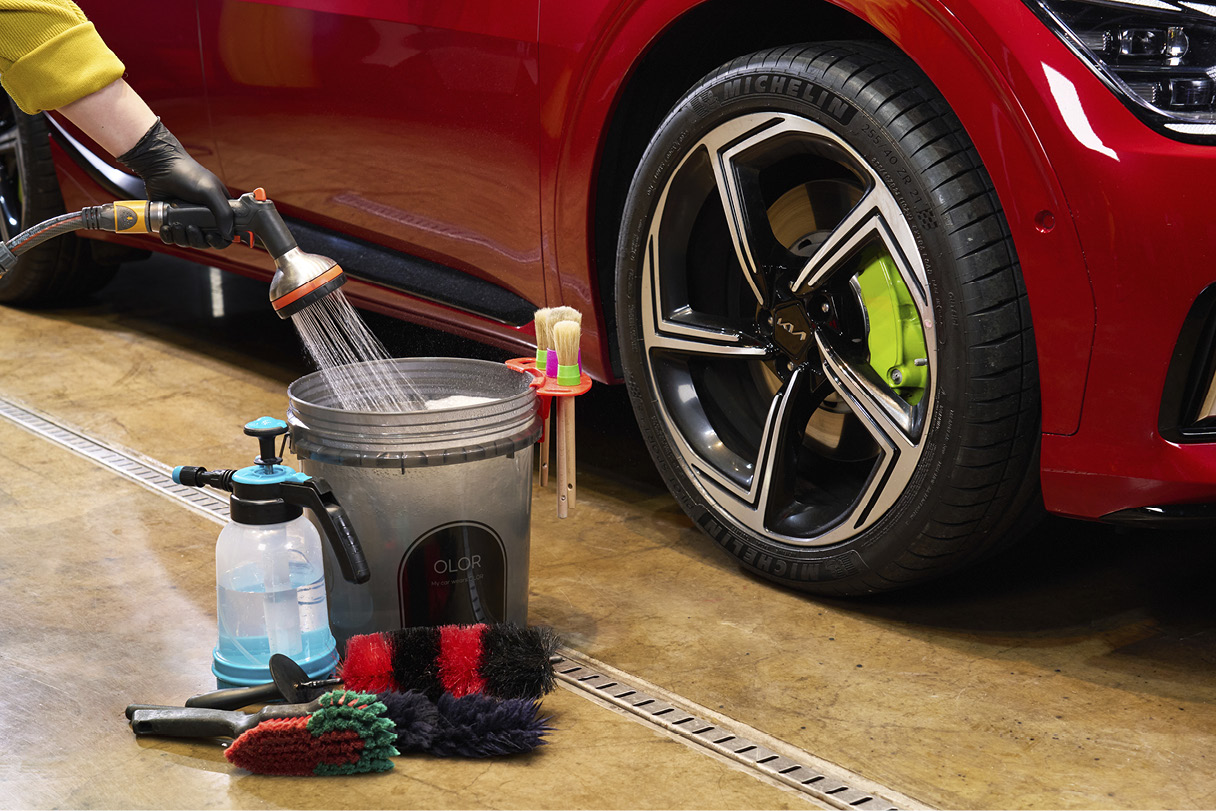
Once checking the contaminants, you should get the necessary supplies. In general, the supplies needed for auto detailing are: bucket, grit guard, compressed air sprayer, detailing brush, wheel brush, wheel inner rim brush, wash pad or wash mitt, drying towel, buffing towel, and applicator.
It’s nice to have a polisher to remove scratches, but you don’t have to buy them, as a buffing towel and paint cleanser will do the job. The types of chemicals also vary: multipurpose cleaner, car shampoo, iron remover, wheel/tire cleaner, oil film remover, glass cleaner, water repellent coat, bug remover, wax, paint coat, paint cleanser, tire polish, interior cleaner, leather cleaner, leather conditioners, etc.
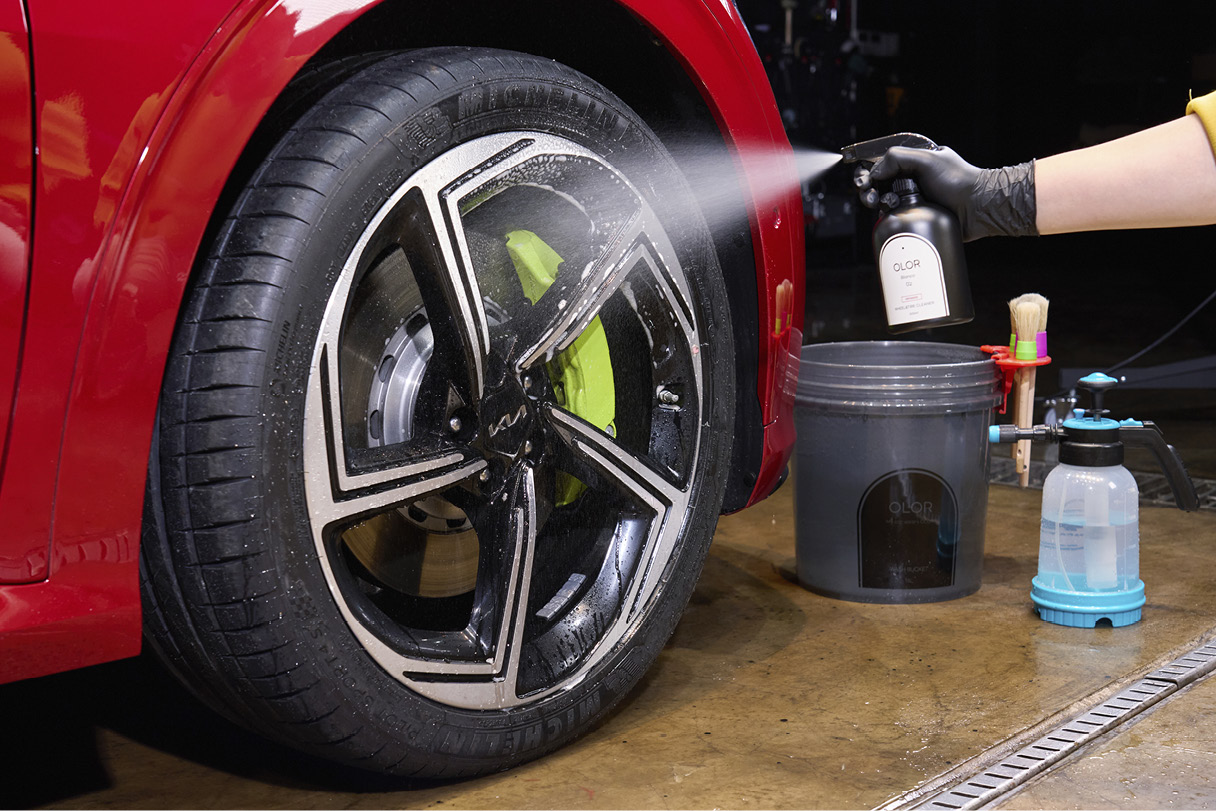
Wheels and tires are the most polluted parts of a car, because they are located close to the road surface and various foreign substances are easily attached due to the heat generated during braking. Powerful chemicals are needed to remove contaminants from wheels and tires. The most commonly used detergent is alkaline, and it has an excellent effect in restoring the color of tires as well as cleaning power. Iron removers are also effective for wheel cleaning. The iron remover dissolves iron, such as brake pad dust, adhered to the wheel through a chemical reaction.
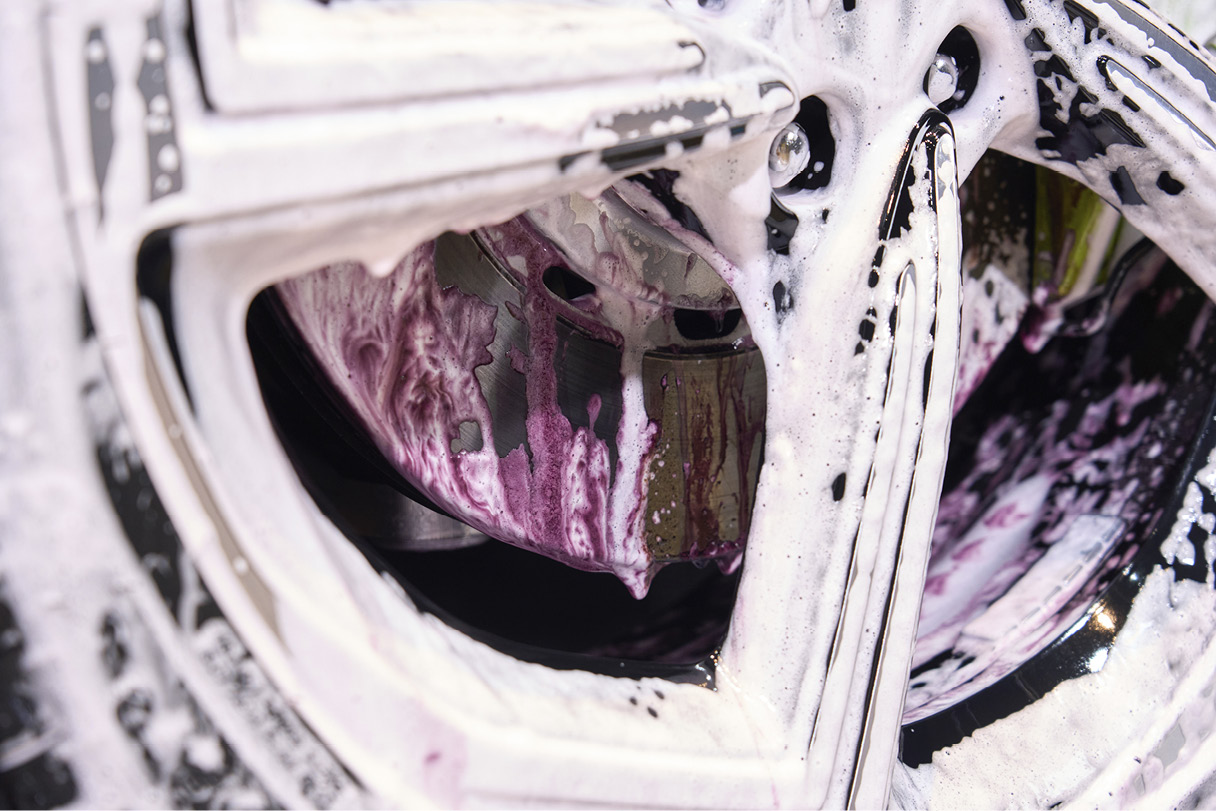
The wheel and tire cleaning process is as follows: First, spray the wheels and brakes with iron remover. After that, apply wheel/tire cleaner and remove contaminants with a detailing brush, tire brush, inner rim brush, etc. The key to wheel and tire cleaning is rinsing. If activated iron remover and wheel/tire cleaner are left for a long time, stains will form, so rinse immediately.
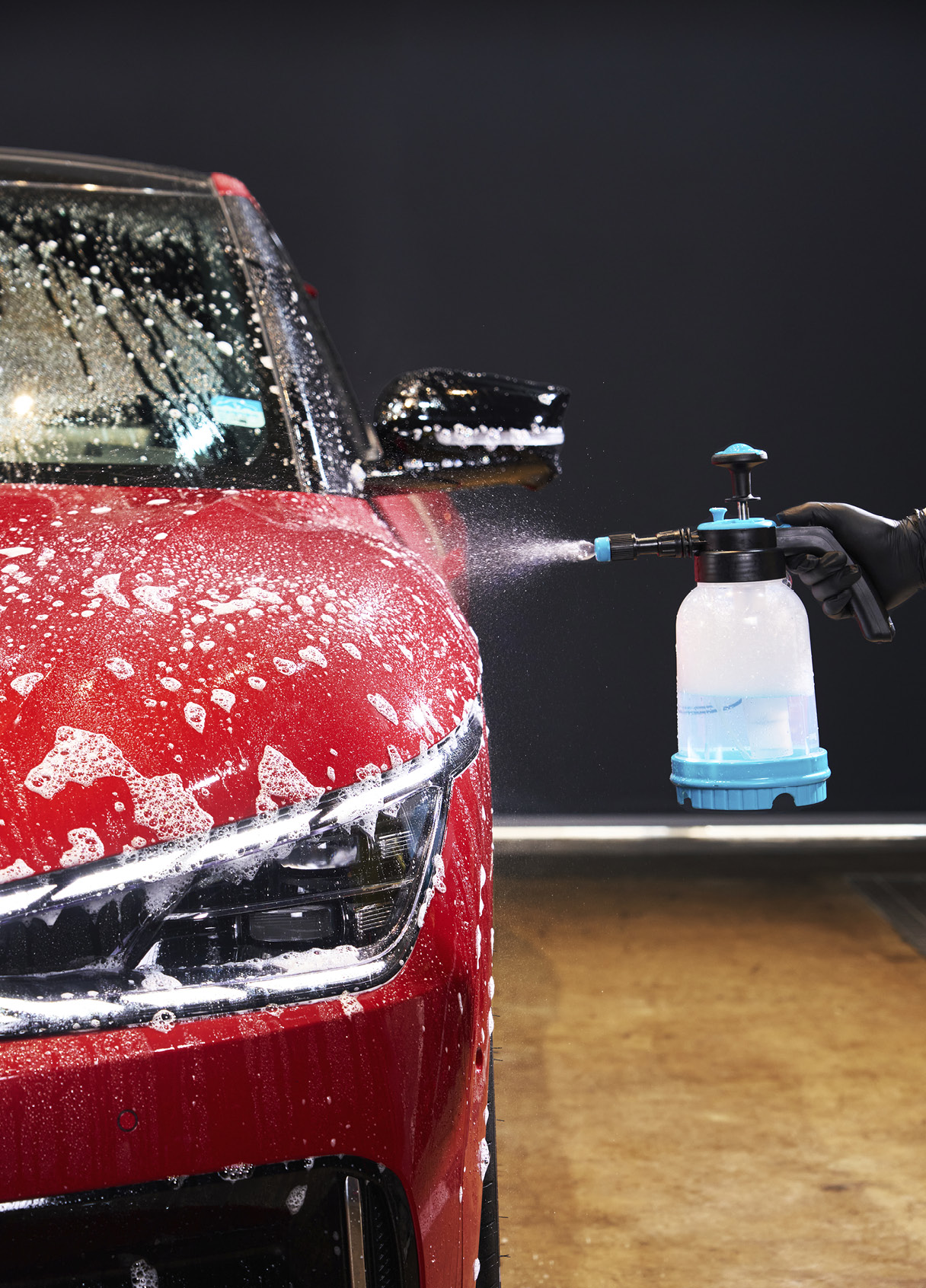
Pre-wash is a process of removing large and small contaminants attached to the vehicle using a multi-purpose cleaner and high-pressure water prior to the main wash. Not only visible contaminants such as dust, bird poop, dead bugs, etc., but also invisible contaminants such as grease and grime stick to the vehicle body. Some of these contaminants can be cleaned through pre-wash. Pre-washing may seem trivial, but it is a very important process. By removing contaminants without physical contact, this prevents scratches and swirl marks that can occur during the main wash.
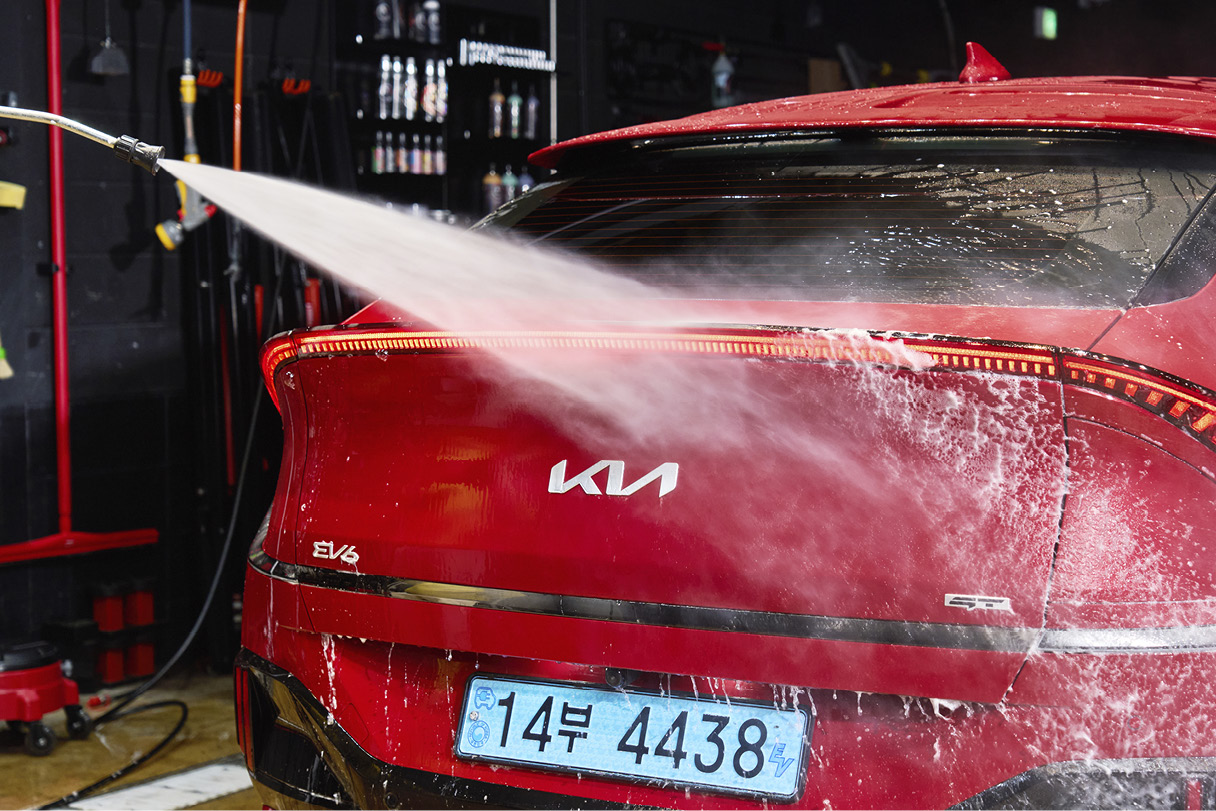
The most basic pre-wash involves diluting all-purpose cleaner and water and spraying it all over the vehicle. After applying, wait 1-2 minutes for the cleaner to react and soak up the contaminants, then rinse with high-pressure water. If you spray high-pressure water immediately after spraying the cleaner, the effect will be reduced. Of course, if the detergent dries, it may leave stains that are difficult to remove, so don’t leave it for too long.
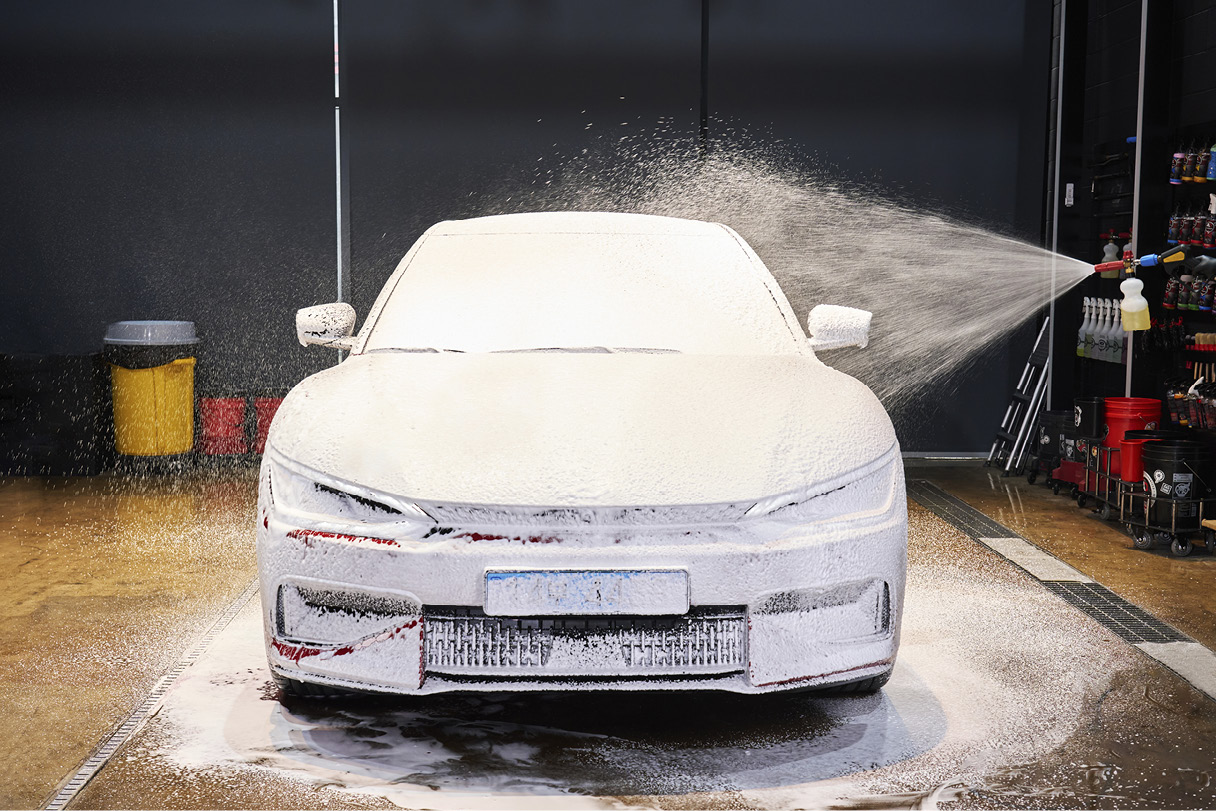
Snow foam, one of the pre-wash processes, uses a foam gun that turns car shampoo into bubbles to apply foam to the entire vehicle and remove contaminants. It removes contaminants by soaking them as multi-purpose cleaners do, but since it has higher adhesiveness than multi-purpose cleaners that are diluted in water, it can effectively remove contaminants with a smaller amount of car shampoo.
For effective cleaning, it is important not to overuse the foam. If there is a lot of foam, it comes off quickly from the painted surface, and the cleaning power decreases because it soaks the contaminants in a shorter time. In order to increase the cleaning power, after applying the foam just enough to lightly cover the painted surface, wait for about 3 to 5 minutes. Since the concentration of snow foam can be different for each car wash and each chemical, it would be better to rinse it off with high-pressure water when the foam has flowed down halfway from the painted surface.
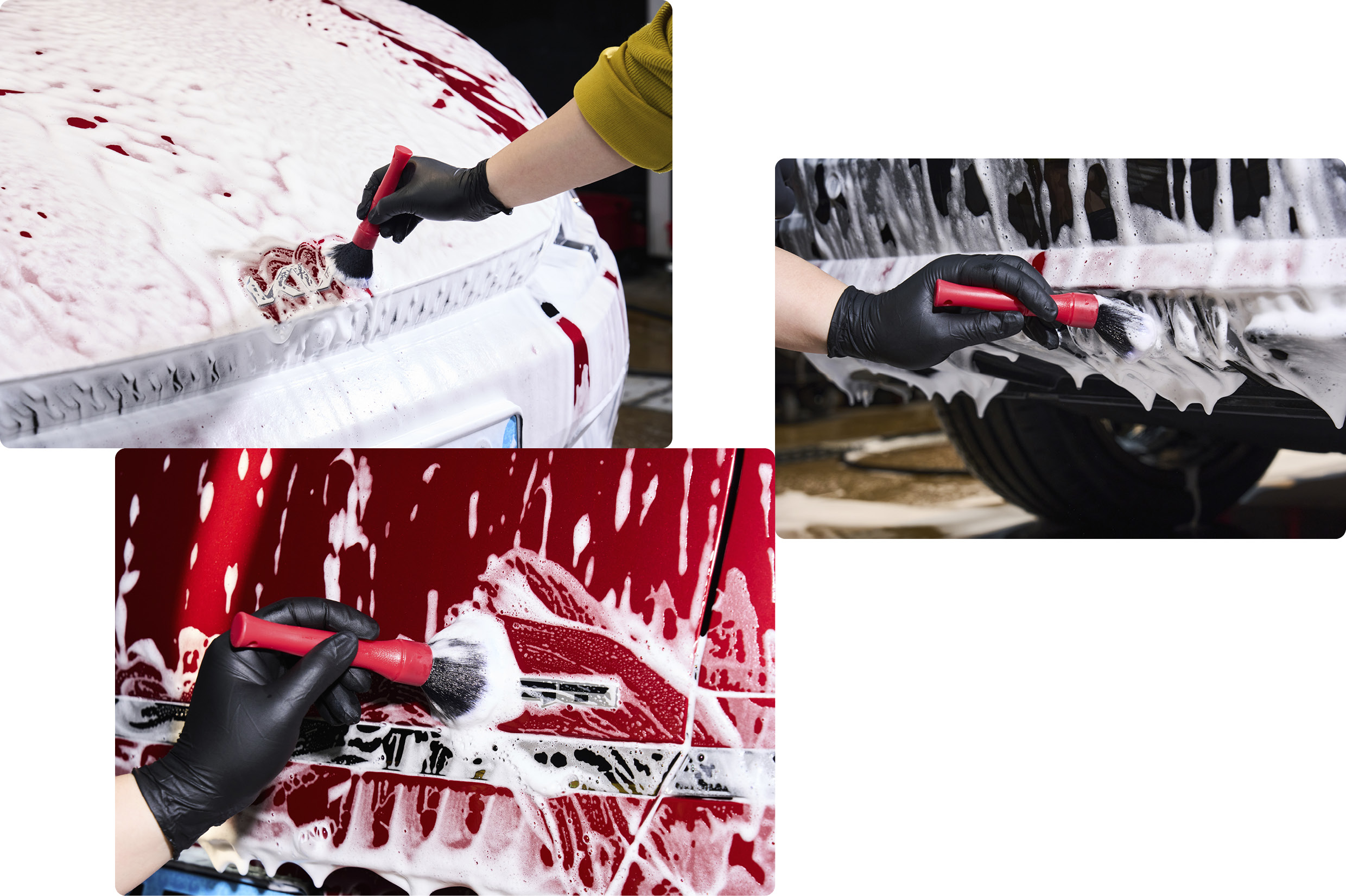
It is good to clean hard-to-reach areas with a soft detailing brush while the snow foam removes contaminants. If you use the foam covering the vehicle to wipe every nook and cranny of the parts that are difficult to reach with the wash pad, such as the emblem, door handle, grill, fuel filler port, side mirror, and bottom of the bumper, main washing will be much more comfortable.
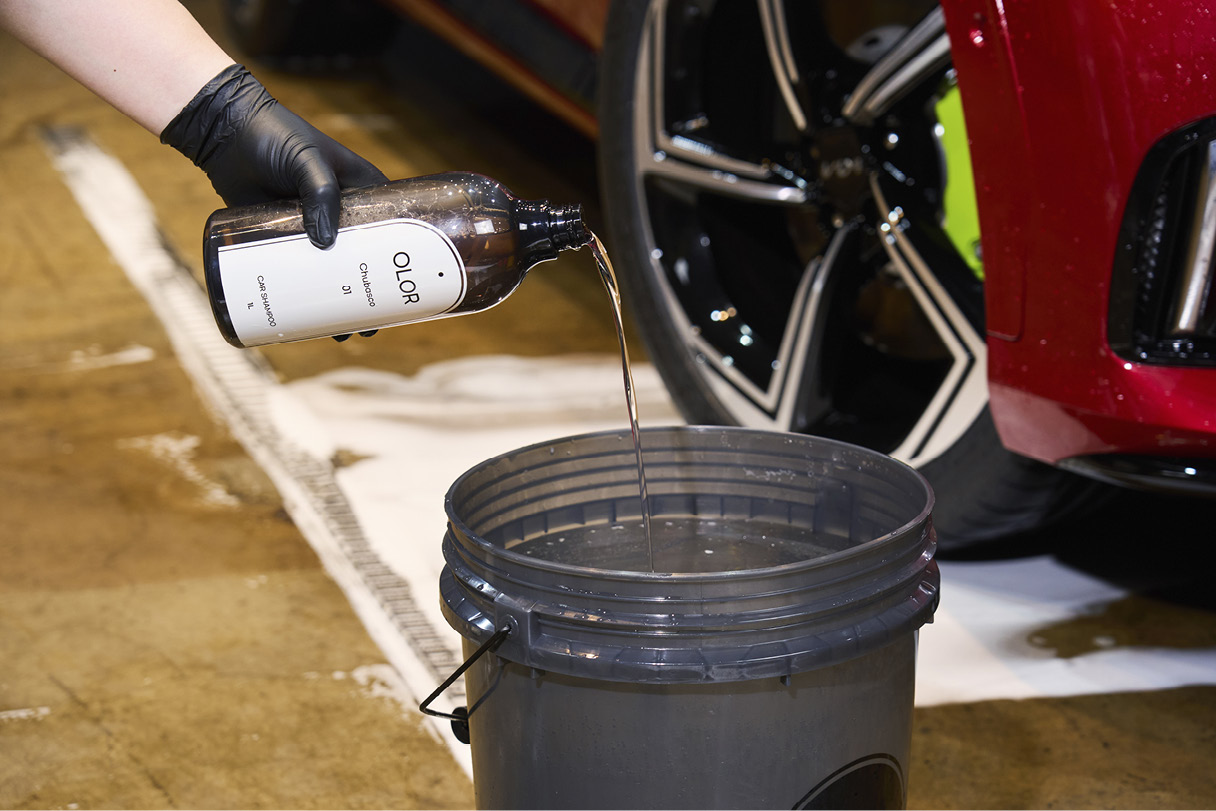
Main washing is the process of physically wiping off contaminants using car shampoo and wash pad. People familiar with auto detailing usually use two buckets when washing a car. One is to dilute the car shampoo, and the other (rinse bucket) is used to rinse the wash pad to prevent scratches due to contaminants attached to the wash pad.
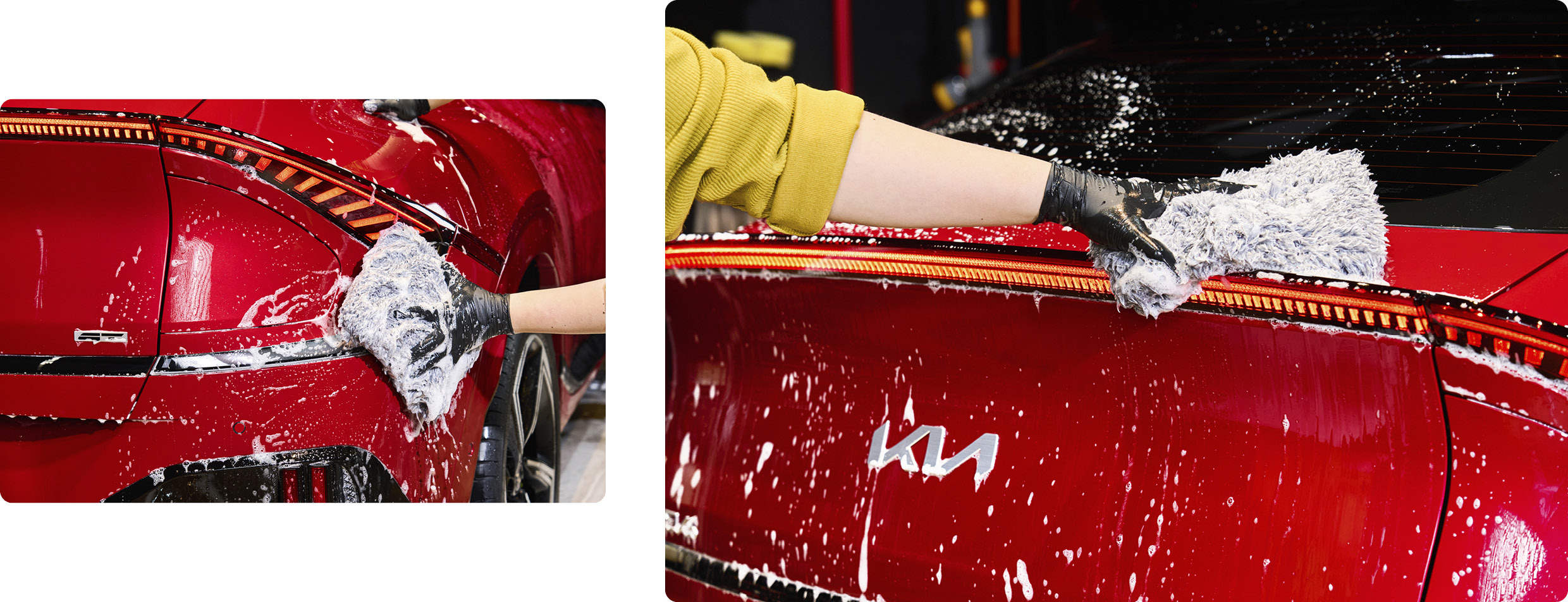
The two-bucket car wash is simple: prepare water and car shampoo in one bucket, and clear water in the rinse bucket. Then, apply enough diluted car shampoo on the wash pad and gently wipe the painted surface. At this time, it is important not to apply additional force to the wash pad containing the car shampoo. If you wipe with excessive force, scratches called swirl marks may appear on the painted surface. In addition, in order to prevent contaminants from remaining on the wash pad, the wash pad must be rubbed firmly against the grit guard at the bottom of the rinse bucket to remove contaminants. For more effective and safe car washing, it is recommended to use two wash pads to separate the upper part of the vehicle and the lower part, which is relatively heavily polluted.
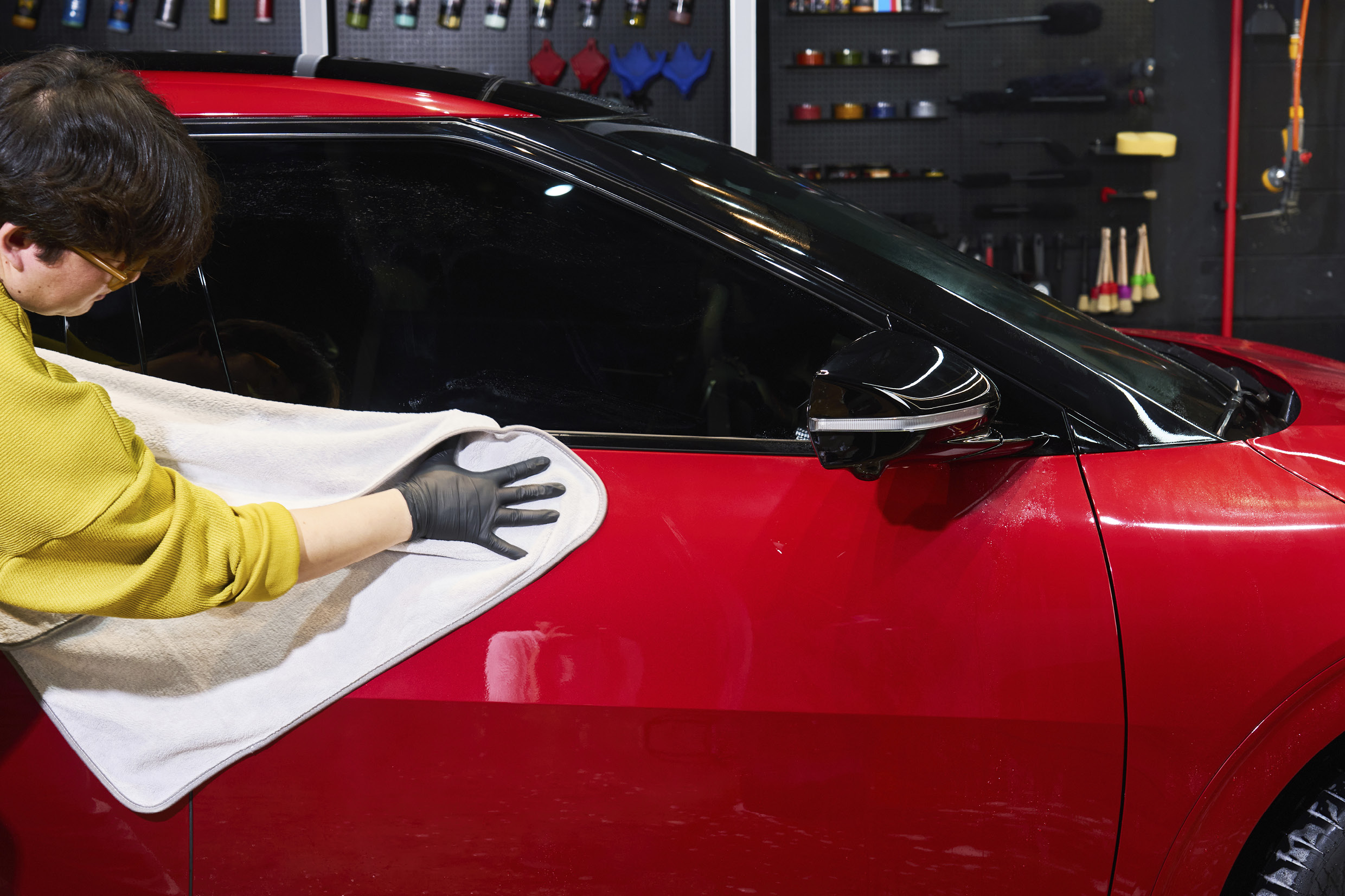
After washing the car and rinsing out the car shampoo, you need to dry it off. Drying is largely divided into water drying, towel drying, and air drying. Water drying is the removal of moisture from the body using large amounts of water. This method is effective on coated surfaces. It is rather difficult to remove water from the uncoated painted surface, because it is in a wet state. Air drying is to use an air gun to remove moisture from gaps in doors, side mirrors, fuel filler doors, grills, license plates, etc. that are hard to reach with a towel.
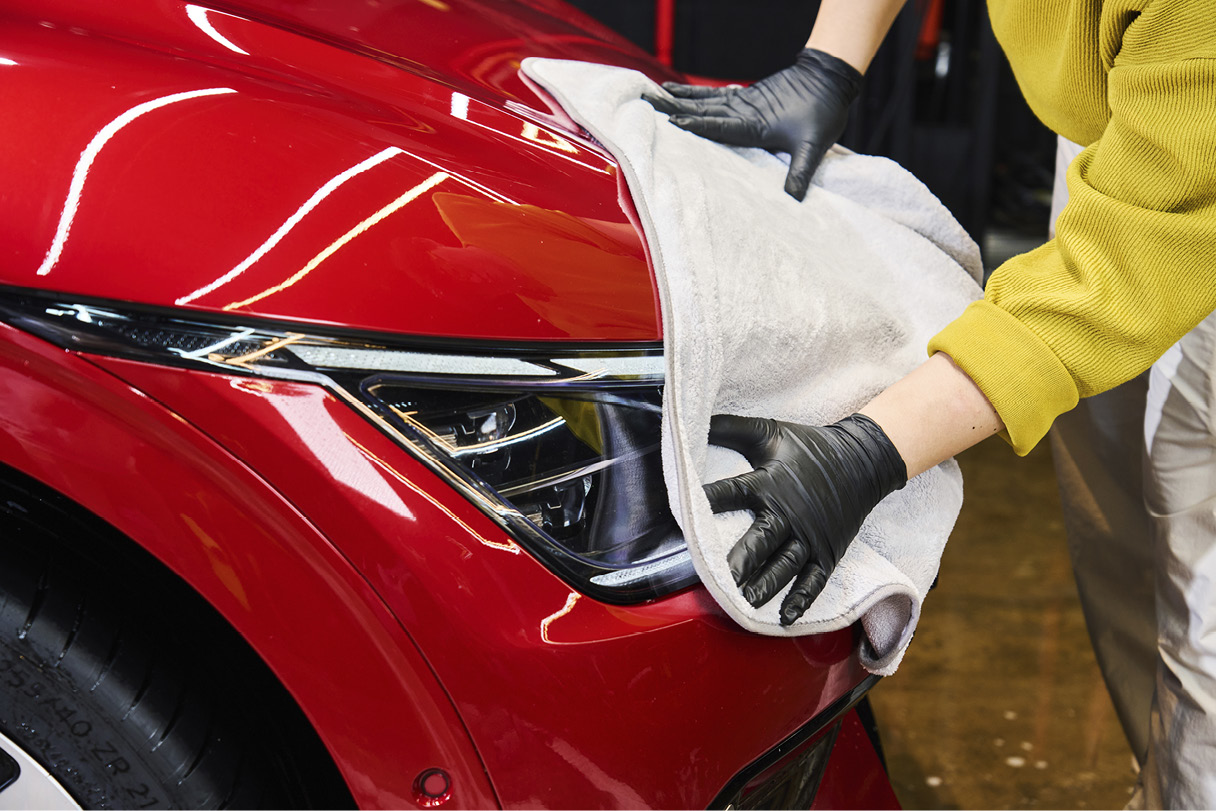
Towel drying is the process of removing moisture using a towel. The softer the towel, the better for removing water without problems. Dry towels can have a rough surface and leave swirl marks. Therefore, it is recommended to wipe the glass first and wet it slightly before use. Also, if you wipe the painted surface after spreading the towel widely, water may not be absorbed immediately on the uncoated surface, leaving residue. Also, the most important thing about towel drying is; Since contaminants often remain on the inside of the door, trunk gap, wheels, tires, etc., it is best to wipe them off last or use a separate towel to prevent scratches on the painted surface.
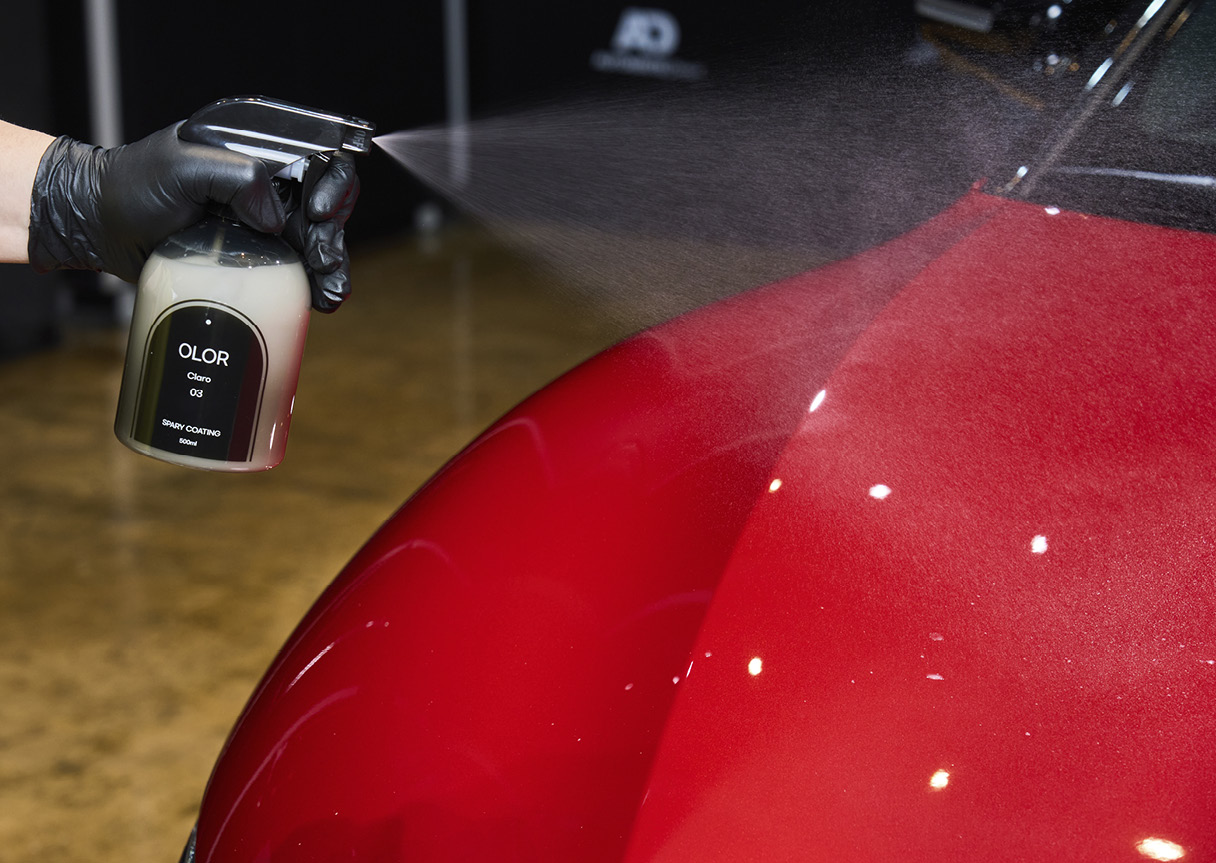
Even a small stimulus can cause scratches on the painted surface of a car that has been cleaned, and it becomes very vulnerable to contamination. Therefore, a coating process is recommended. Coating agents used in auto detailing include glaze, wax, and sealant. Glaze focuses on making the painted surface shine as much as possible. Recently, it also houses a filling function that hides swirl marks, so extra polishing is not necessary. The wax is a short form of carnauba wax, derived from coats made from natural carnauba. It forms a coat layer to protect the painted surface from contaminants and enhances the gloss. Unlike wax, sealants are synthetic chemicals made from materials derived from petroleum. However, like wax, sealants also protect surfaces and make them shine.
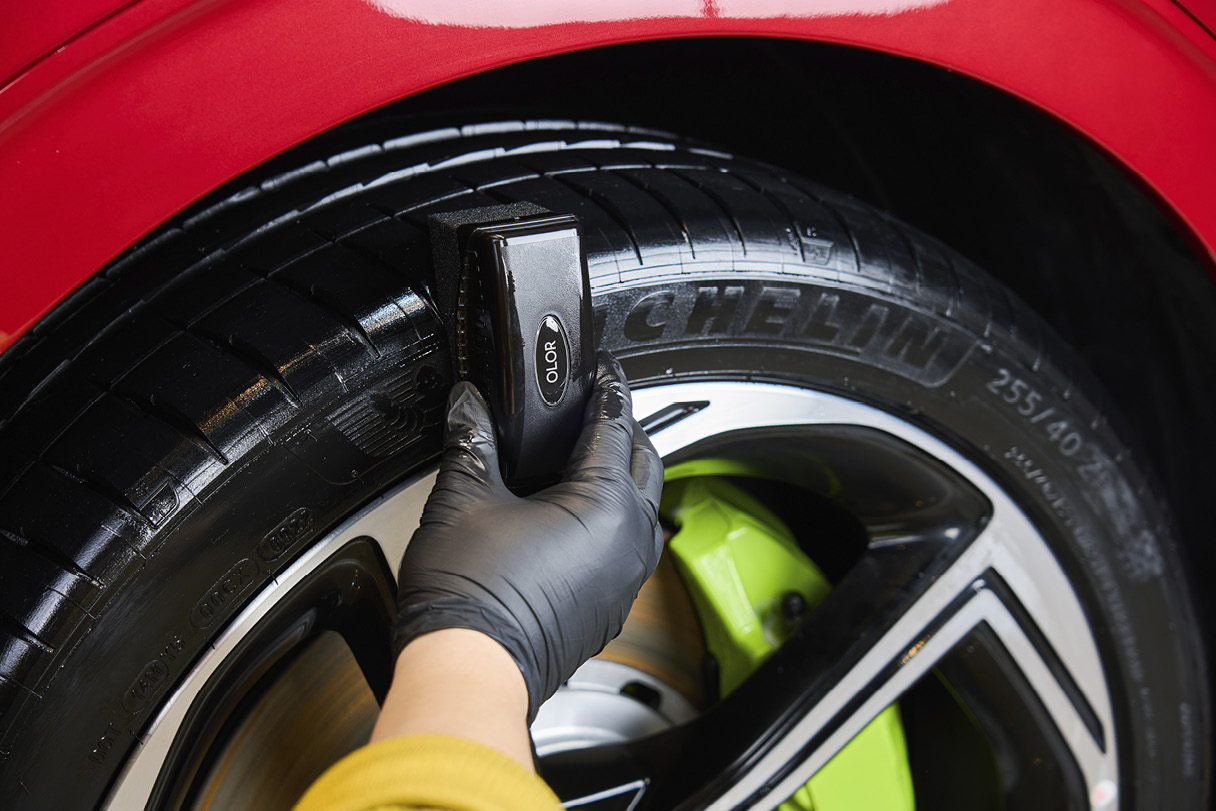
Glazes, waxes, and sealants are preferably used in this order; This is called layering. The important thing in coating work is to check the method of using each product, the curing time, and the right amount. Also, when using a buffing towel to spread each product, move it gently without applying additional force to the towel to prevent scratches. When coat layering has not been done for a long time, you can increase the durability of the coat by using a quick detailer as a maintenance agent.
Wheels and tires also need to be coated after cleaning. Since the temperature of the wheel is high, it is better to use a heat-resistant sealant specifically for the wheel. Coating with tire polish not only looks good, it also protects the tire from hardening and contaminant damage.
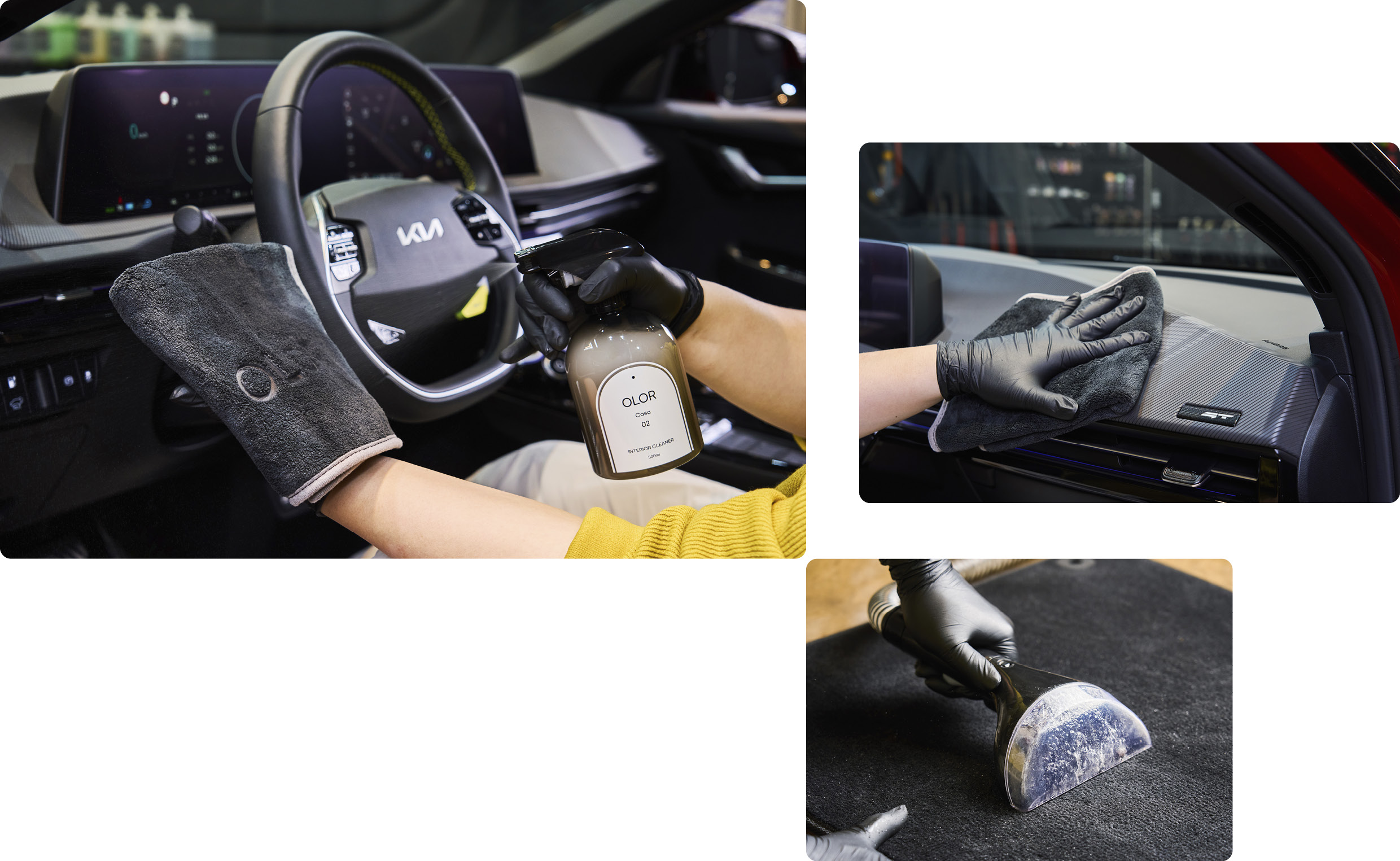
Interior detailing is the process of removing various contaminants such as dust and mold accumulated inside the car and foreign substances caused by people getting on and off the car. Since these indoor contaminants have a bad effect on the vehicle, regular interior detailing is recommended.
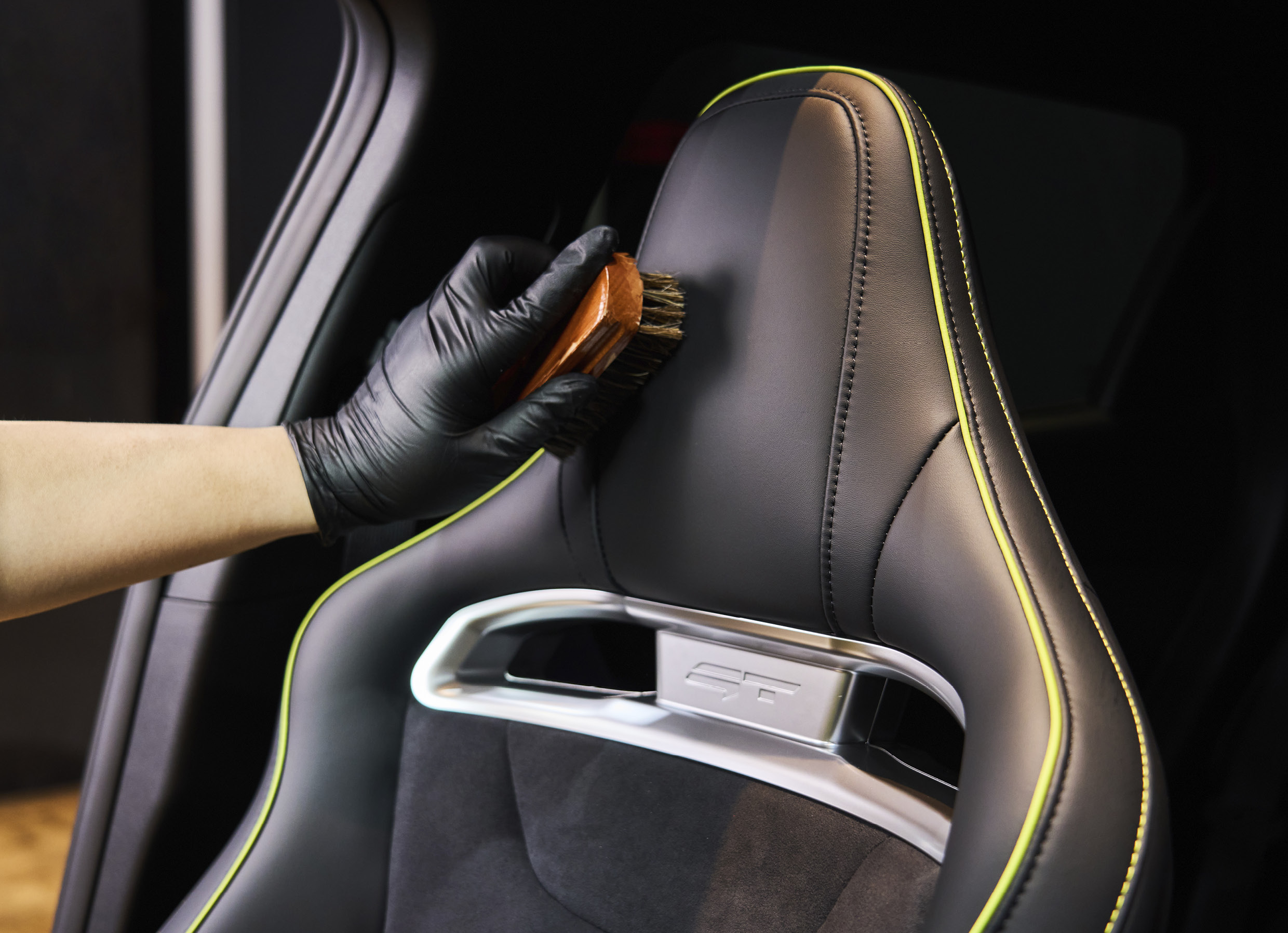
Since various materials such as natural leather, artificial suede (ultra-microfiber fabric), regular fabric, and plastic are applied to the interior, it is necessary to use a cleaning agent suitable for each material. Artificial suede, for example, requires direct spraying of cleaner and then wiping the area with a towel. If there is no specific detergent, you can prevent damage by washing only with water and then drying in the shade. Leather cleaning also requires a dedicated detergent, and a brush should be used for heavily contaminated areas. In addition, it is good to apply a leather moisturizer because natural leather after washing can lose moisture and cause cracks. Also, for plastic trim, it is recommended to use a dedicated cleaner that contains anti-dust components to prevent dust from sticking.
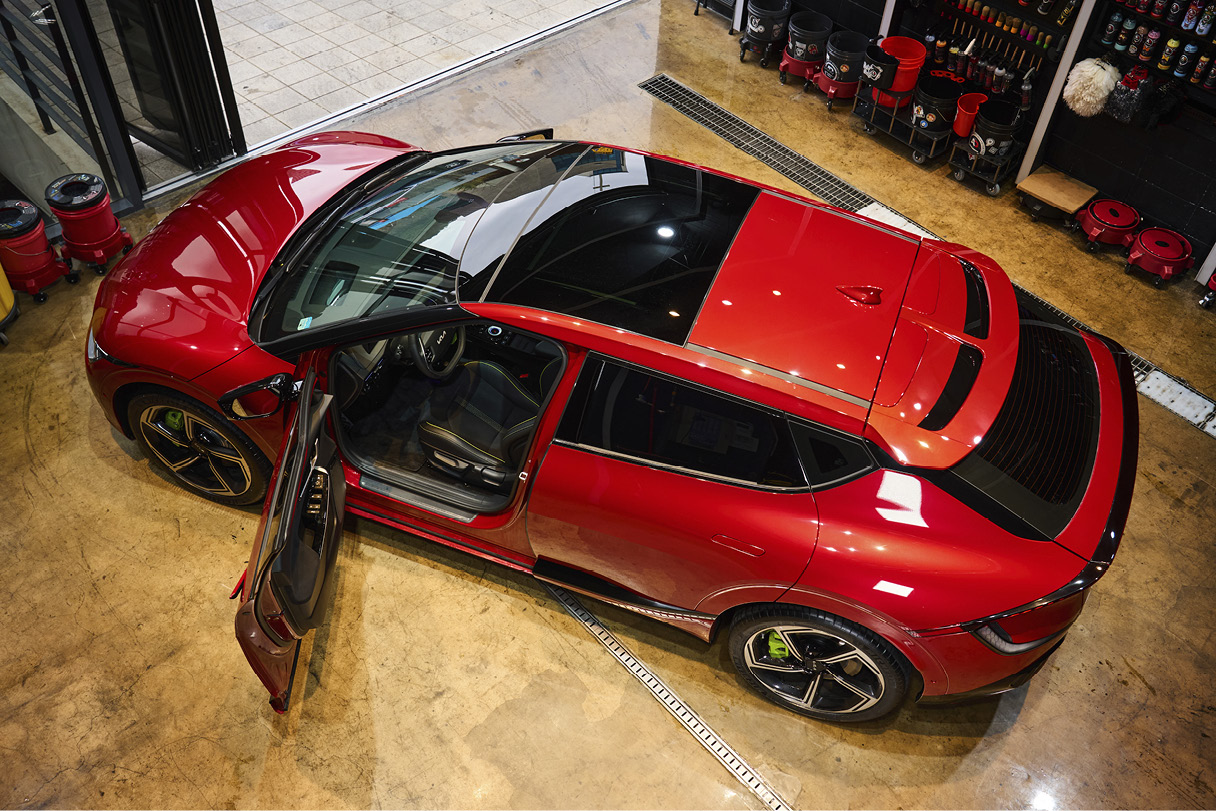
Each expert has a different opinion on the process of auto detailing. However, they all agree that this work minimizes damage to the paintwork and interior materials and gives the car a brand-new look. Auto detailing can be a lot of fun if you master a few necessary details.
by Inhak Heo
Photography by Hyuk-soo Jo
Filmed by Do-yeon Nam, Hee-don Jung, Yong-shik Woo
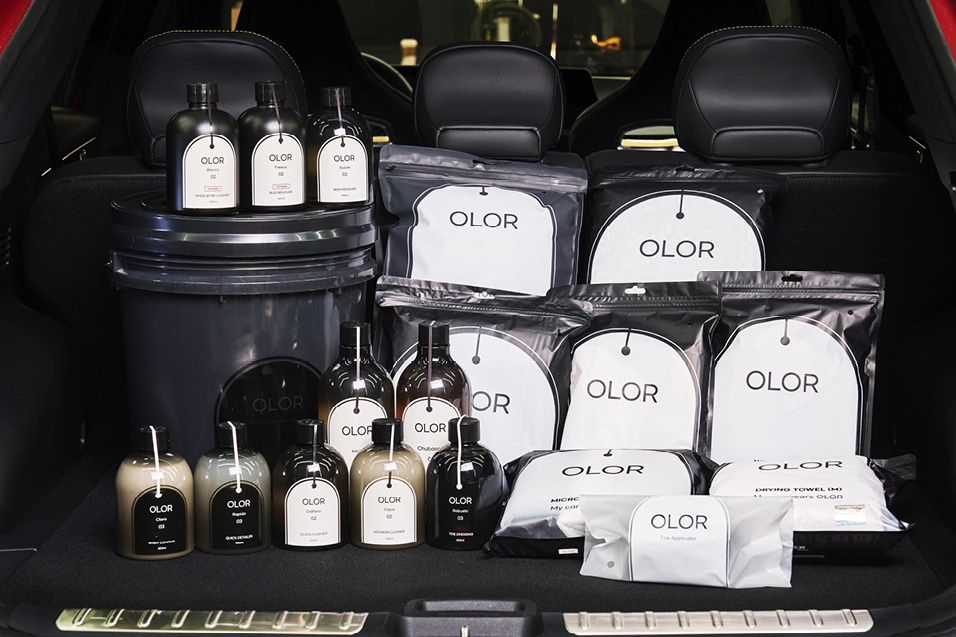
There are too many products on the market, and many people have difficulty choosing products for auto detailing because each product contains different ingredients. For auto detailing rookies, a neutral cleaner is recommended. Neutral detergent is not only harmless to the human body, but also has excellent cleaning power. Hyundai Mobis’ car wash brand OLOR’s pre-wash Hola, car shampoo Chubasco, and iron remover Suave are neutral detergents.
The coating agent should be easy to use and should have high coating performance. If a beginner chooses a product with a high level of work difficulty, it is not easy to coat the painted surface and may rather cause damage to the painted surface. OLOR’s quick detailer Rapido, glass film coating agent Claro, and tire polish Robusto are good coating agents for beginners in auto detailing. These have high stain resistance, water repellency, and durability. Above all, the biggest advantage of OLOR coating is that it is easy to use.
For safe auto-detailing, thick, soft towels such as ultra-fine fibers are recommended. This not only absorbs moisture quickly, but also prevents paint damage. Also, good towels do not have seams and have finished edges. OLOR’s drying towels and buffing towels are also made of microfiber to minimize damage to the painted surface. Wash mitts and wash pads should be made of natural wool or long fibers. The sponge is bad, because its high density leaves contaminants on the edges. OLOR’s wash mitt and wash pad are made of microfiber fabric and high-density, high-elastic sponge, so they can hold a large amount of bubbles, helping to clean and protect the painted surface.